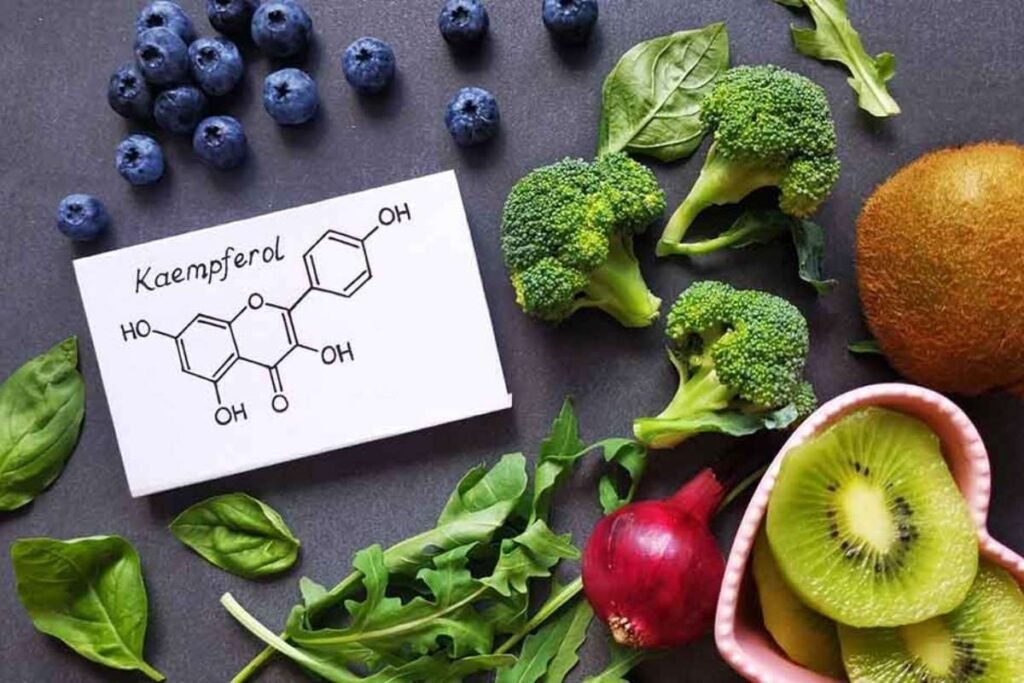A Promising Discovery in Everyday Foods : Natural Compound in Fruits
Researchers at the University of Missouri have found that a natural compound in fruits and vegetables may hold therapeutic promise for those suffering from neurodegenerative diseases such as ALS and dementia. The compound, kaempferol, is a natural antioxidant found in foods like kale, berries, and endives. According to lead researcher Smita Saxena, a professor of physical medicine and rehabilitation at the university’s School of Medicine, the compound significantly helped maintain motor and muscle function and reduced muscle wasting in lab experiments.
The study, which focused on nerve cells derived from ALS patients, revealed that kaempferol improved overall cellular health by boosting energy production and reducing cellular stress in the endoplasmic reticulum—a structure within the cell that processes proteins. These findings suggest that kaempferol could help slow the progression of neurodegenerative disorders by supporting nerve cell function.
Saxena highlighted the uniqueness of the compound’s effects, stating, “This is one of the first compounds that appears to simultaneously support both the mitochondria and the endoplasmic reticulum, two crucial components within nerve cells. This dual action could trigger a strong neuroprotective response.”
Biological Benefits Meet Practical Challenges of Natural Compound in Fruits
Despite the promising results, the researchers acknowledged a significant hurdle: the human body does not easily absorb kaempferol through regular dietary intake. Saxena explained that to reach the dosage used in their experiments, a person would need to consume around 10 to 11 pounds of kale in a single day—an unrealistic feat for most people. “Our bodies absorb only a small amount of kaempferol from the vegetables we eat, which limits its effectiveness as a treatment,” she said.
Another obstacle lies in delivering kaempferol to the brain. The blood-brain barrier, a tightly controlled cellular defense mechanism, prevents many large molecules—including kaempferol—from entering the brain tissue where they are most needed.
Given these challenges, researchers are now investigating methods to increase the compound’s bioavailability and enhance its ability to reach nerve cells, particularly in the brain. These efforts are crucial if kaempferol is to be developed into a viable therapeutic agent for neurodegenerative diseases.
Innovation in Delivery Methods and Future Testing
To overcome absorption and delivery issues, Saxena’s team at the Roy Blunt NextGen Precision Health building is turning to nanotechnology. They are developing lipid-based nanoparticles—tiny fat-based spheres commonly used in modern drug delivery systems—to encapsulate kaempferol. These nanoparticles are designed to be more easily absorbed by the body and effectively delivered to neurons.
“The goal is to encapsulate kaempferol in these lipid nanoparticles so it can reach neurons more efficiently and enhance its neuroprotective effect,” Saxena said.
The team is currently producing the nanoparticles and aims to begin testing them by the end of 2025. If successful, this could open the door for not only treating ALS but also providing relief for patients with other neurodegenerative disorders such as Alzheimer’s and Parkinson’s disease. While there are still hurdles ahead, the research marks a hopeful step forward in the fight against these debilitating conditions.









